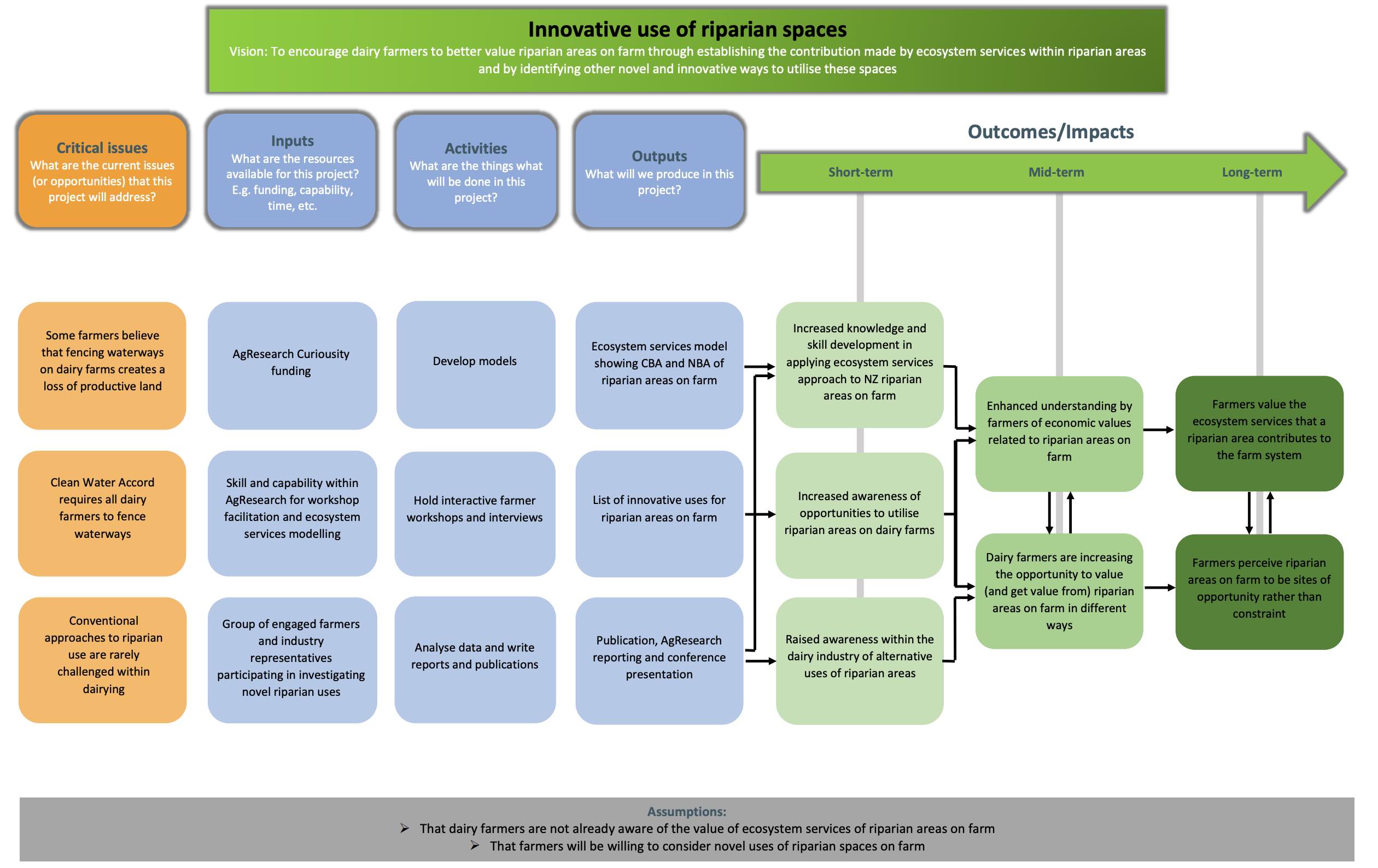Programme logic
A tool for teams to plan what a project will do and how it will do it.
- Moderate
- 3 hours
In a programme logic you set out what a project will do and how it will do it. This involves specifying steps that need to occur for a project to meet its desired outcomes. Programme logics generally consist of identifying a project's:
- inputs,
- activities,
- outputs, and
- outcomes (from short to long term) that you intend to arise from your project.
An important aspect of programme logics is the identification of assumptions at each stage.
It is useful in its development as it encourages discussion within the team about how outcomes will be achieved. It allows the logic of the project to be tested and questioned and helps identify some key assumptions that the project team are making. It can also guide ongoing project evaluation, assessing whether you are on track.
This method can be used for different sizes of project or programme. However, the larger the programme, the more synthesis will be to be able to communicate the whole programme concisely.
How to create a programme logic
A programme logic is created through a backcasting approach. The project team describes what outcomes they want to see and works backwards to the present moment.
This exercise is best done in a workshop, taking about 3 hours. It needs someone to facilitate it.
- Get the group to decide on a project vision.
- Ask the group to discuss the critical issues or opportunities that this project will address.
- Participants are then able to determine the gap or need(s) between the current situation and intended goal. The need is then responded to with agreed actions or activities that would allow the need to be met and the goal to be realised
- Using the template for the table shown below (PDF document), ask individuals to identify the long term outcomes of the project and the timeframe. These are often beyond the project timeframes.
-
Continue working through the programme logic diagram discussing and agreeing on:
- mid-term outcomes, which could be the actions or practices or policies that lead to the long-term outcomes being achieved.
- short term outcomes that lead to the mid-term outcomes being achieved. These could be changes in knowledge, attitudes and skills. The short term outcomes should be achieved within the life of the project.
- outputs such as knowledge, services, products that need to be delivered to achieve the short term outcomes.
- activities that lead to those outputs and the inputs needed to complete those activities. Discuss and agree as a group
- inputs are resources needed for the activity
We strongly recommend working through the diagram's components in this order (i.e. from right to left). This is the backcasting.
 AgResearch example programme logic diagram that includes assumptions. Download the worked example as a PDF
AgResearch example programme logic diagram that includes assumptions. Download the worked example as a PDF -
Write the agreed programme logic on a white board and as a group identify and document the assumptions around each step e.g. what are you assuming will be in place for these inputs to deliver these activities (e.g. the staff with the right skills will be available).
Why is this useful?
It is useful as it encourages discussion within the team about how outcomes will be achieved. It enables the logic of the project to be tested and questioned and helps identify some key assumptions that the project team are making.
It is also useful to guide ongoing evaluation of the project and whether you are on track.
This method can be used for different sizes of project or programme. However the larger the program, the more synthesis will be needed to be able to communicate the whole programme concisely.
More information
Programme logic, Community sustainability toolbox.
Programme Logic guide, AgResearch Beyond Results.

